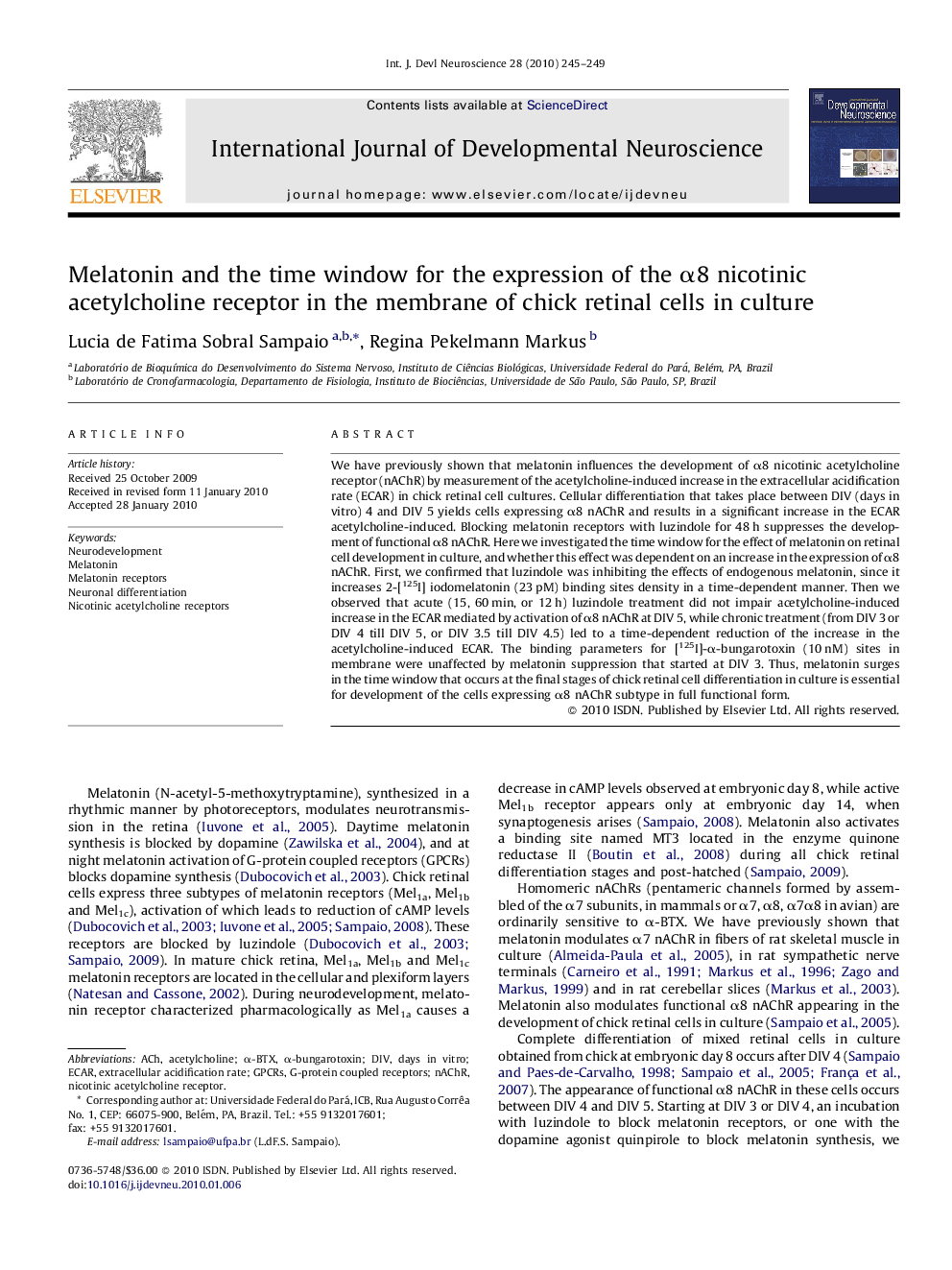| Article ID | Journal | Published Year | Pages | File Type |
|---|---|---|---|---|
| 2786724 | International Journal of Developmental Neuroscience | 2010 | 5 Pages |
We have previously shown that melatonin influences the development of α8 nicotinic acetylcholine receptor (nAChR) by measurement of the acetylcholine-induced increase in the extracellular acidification rate (ECAR) in chick retinal cell cultures. Cellular differentiation that takes place between DIV (days in vitro) 4 and DIV 5 yields cells expressing α8 nAChR and results in a significant increase in the ECAR acetylcholine-induced. Blocking melatonin receptors with luzindole for 48 h suppresses the development of functional α8 nAChR. Here we investigated the time window for the effect of melatonin on retinal cell development in culture, and whether this effect was dependent on an increase in the expression of α8 nAChR. First, we confirmed that luzindole was inhibiting the effects of endogenous melatonin, since it increases 2-[125I] iodomelatonin (23 pM) binding sites density in a time-dependent manner. Then we observed that acute (15, 60 min, or 12 h) luzindole treatment did not impair acetylcholine-induced increase in the ECAR mediated by activation of α8 nAChR at DIV 5, while chronic treatment (from DIV 3 or DIV 4 till DIV 5, or DIV 3.5 till DIV 4.5) led to a time-dependent reduction of the increase in the acetylcholine-induced ECAR. The binding parameters for [125I]-α-bungarotoxin (10 nM) sites in membrane were unaffected by melatonin suppression that started at DIV 3. Thus, melatonin surges in the time window that occurs at the final stages of chick retinal cell differentiation in culture is essential for development of the cells expressing α8 nAChR subtype in full functional form.
